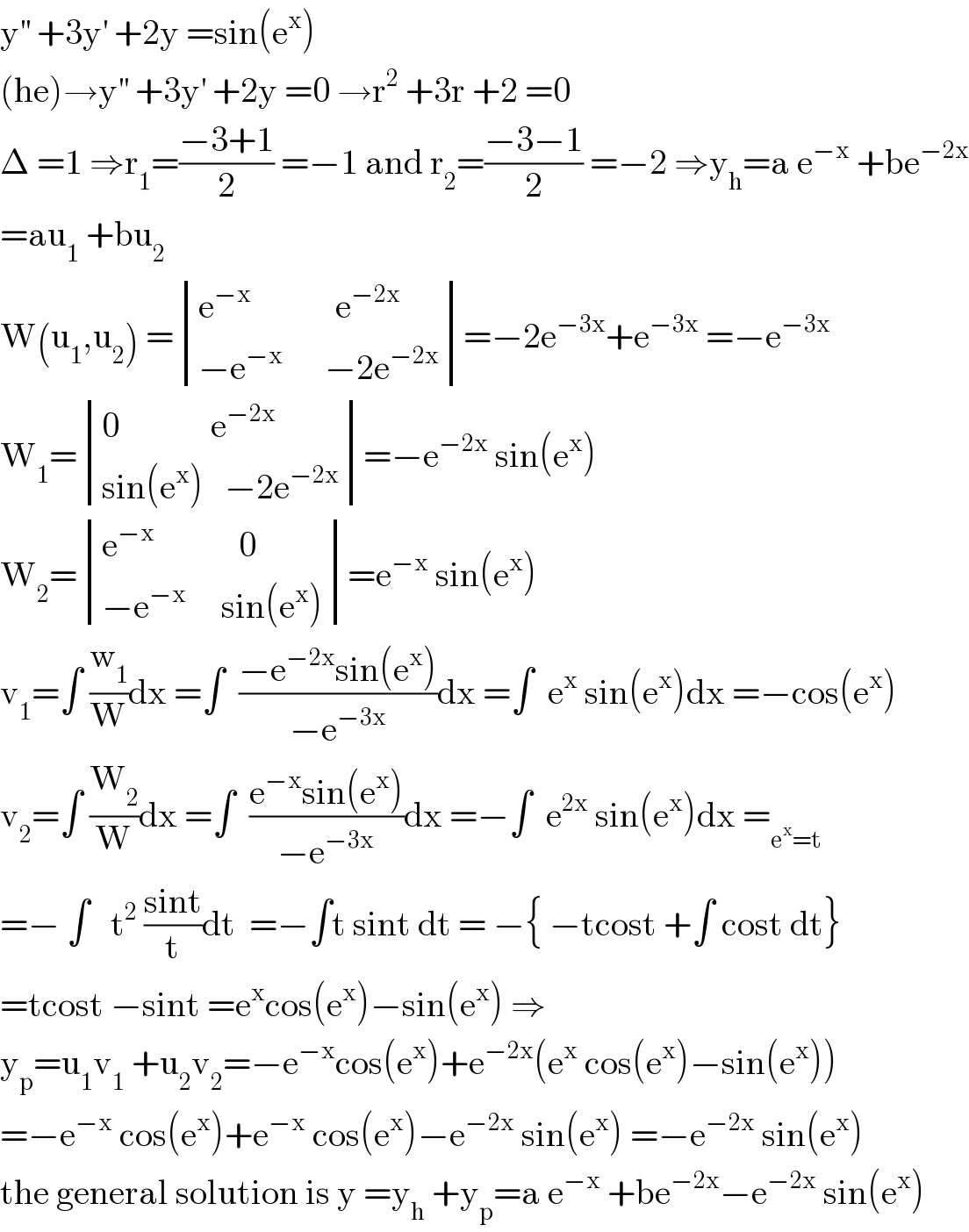
Question and Answers Forum
Question Number 99600 by bemath last updated on 22/Jun/20

Answered by mathmax by abdo last updated on 22/Jun/20

Commented by bemath last updated on 22/Jun/20

Commented by mathmax by abdo last updated on 22/Jun/20

| ||
Question and Answers Forum | ||
Question Number 99600 by bemath last updated on 22/Jun/20 | ||
 | ||
Answered by mathmax by abdo last updated on 22/Jun/20 | ||
 | ||
| ||
Commented by bemath last updated on 22/Jun/20 | ||
 | ||
Commented by mathmax by abdo last updated on 22/Jun/20 | ||
 | ||